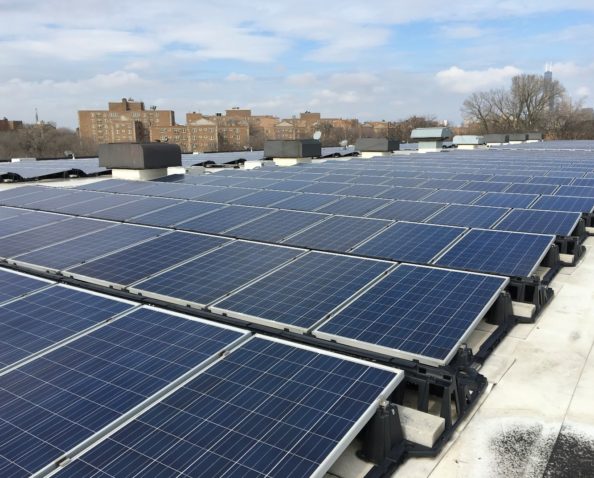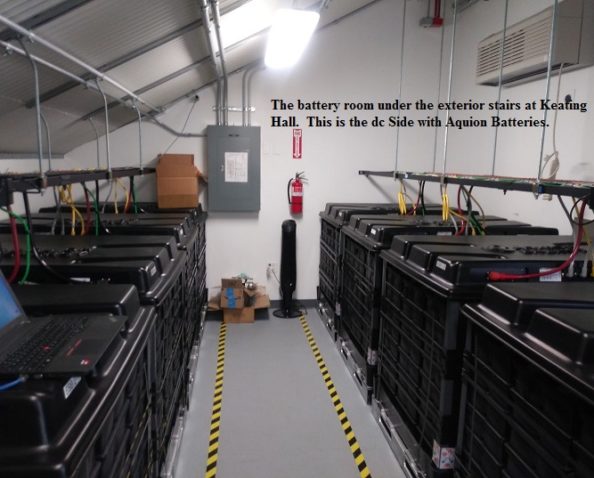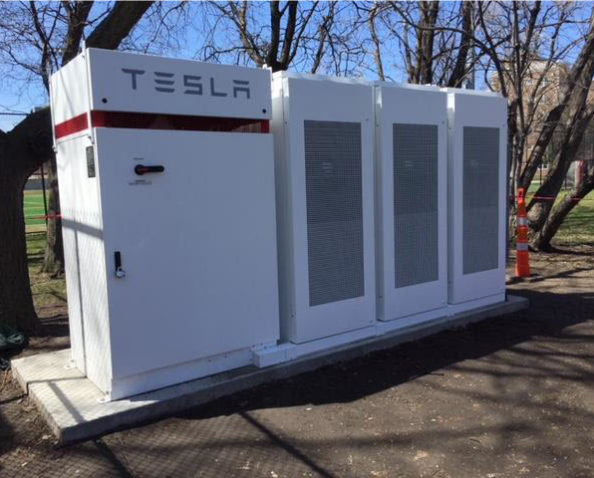Program Area:
Energy Program
County:
Cook
Grantee:
Illinois Institute of Technology
Grant Date:
November 2015, May 2017, November 2017
Grant Amount:
$574,579
Location:
Chicago, IL 60616
Illinois Institute of Technology (IIT), has received multiple grants from the Illinois Clean Energy Community Foundation to support the development of a microgrid. Thirty-five of IIT’s buildings form a small electric grid that can operate independently of the electricity provider, if needed. Using renewable energy and battery storage, IIT has the ability to power multiple buildings on the campus microgrid.
The first grant that IIT received from the Foundation toward the microgrid project was for the installation of a 180 kW solar photovoltaic (PV) system coupled with Aquion Energy Aqueous Hybrid Ion (AHI) batteries with an energy storage capacity of 160 kWh at Keating Hall. Keating Hall is a 64,500 ft2 athletic and recreation building with a basketball court, a pool, weight training room, locker rooms, and meeting rooms. Keating Hall is completely islandable, meaning that in the event of a power-outage, Keating Hall can supply power to its critical loads. Because of this “islandability”, Keating Hall is referred to as the Keating Nanogrid.
Keating Hall is unique in that its 180 kW PV installation powers a hybrid nanogrid with alternating current (ac) and direct current (dc) subsystems. One portion of the PV system powers the building’s dc lighting system. As part of the project, IIT replaced 200 ac fluorescent light fixtures with 98 dc LED lights of much lower wattage that are dimmable, controllable remotely, and powered by the solar panels or batteries. Because solar panels and batteries generate dc, no inverters are necessary; this results in cost savings and avoided conversion losses by not converting dc to ac. The LED lights, according to reports from IIT, offer 75%-90% energy savings.
Another portion of the PV installation generates electricity that flows through an inverter and is used to power the building’s ac load, such as the pool pump. Both the dc and ac distribution systems include battery storage components. The AHI batteries are made of a saltwater electrolyte solution, carbon, cotton, and an oxide, making it a more sustainable option. They are also nonflammable, noncorrosive, and nonexplosive. The batteries store solar energy.
More recently, and with Foundation funds, IIT successfully installed a 300 kW Tesla Battery Energy Storage System (BESS) at the Stuart Data Center on IIT’s campus. The BESS has 500 kWh of energy storage capacity and also allows uninterrupted power supply to the Stuart Data Center with the use of two solar PV systems (87kW) and a 10-kW wind turbine. The BESS at Stuart provides backup, peak shaving resulting in significant dollar savings, reduced demand on the electric utility, and islandability.
IIT received its most recent grant in November 2017 for a 250 kW Tesla BESS with an energy storage capacity of 500 kWh at S.R. Crown Hall. Crown Hall is home to the College of Architecture and was designed by Ludwig Mies van der Rohe in 1956. It is a national historic landmark. The installation is expected to be complete by October 2018.



